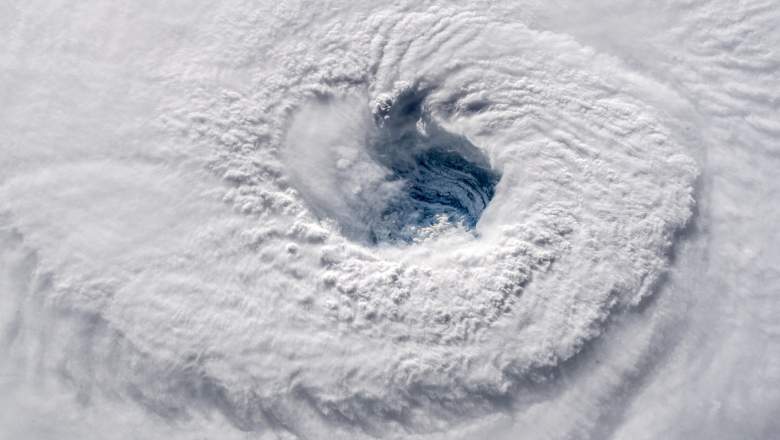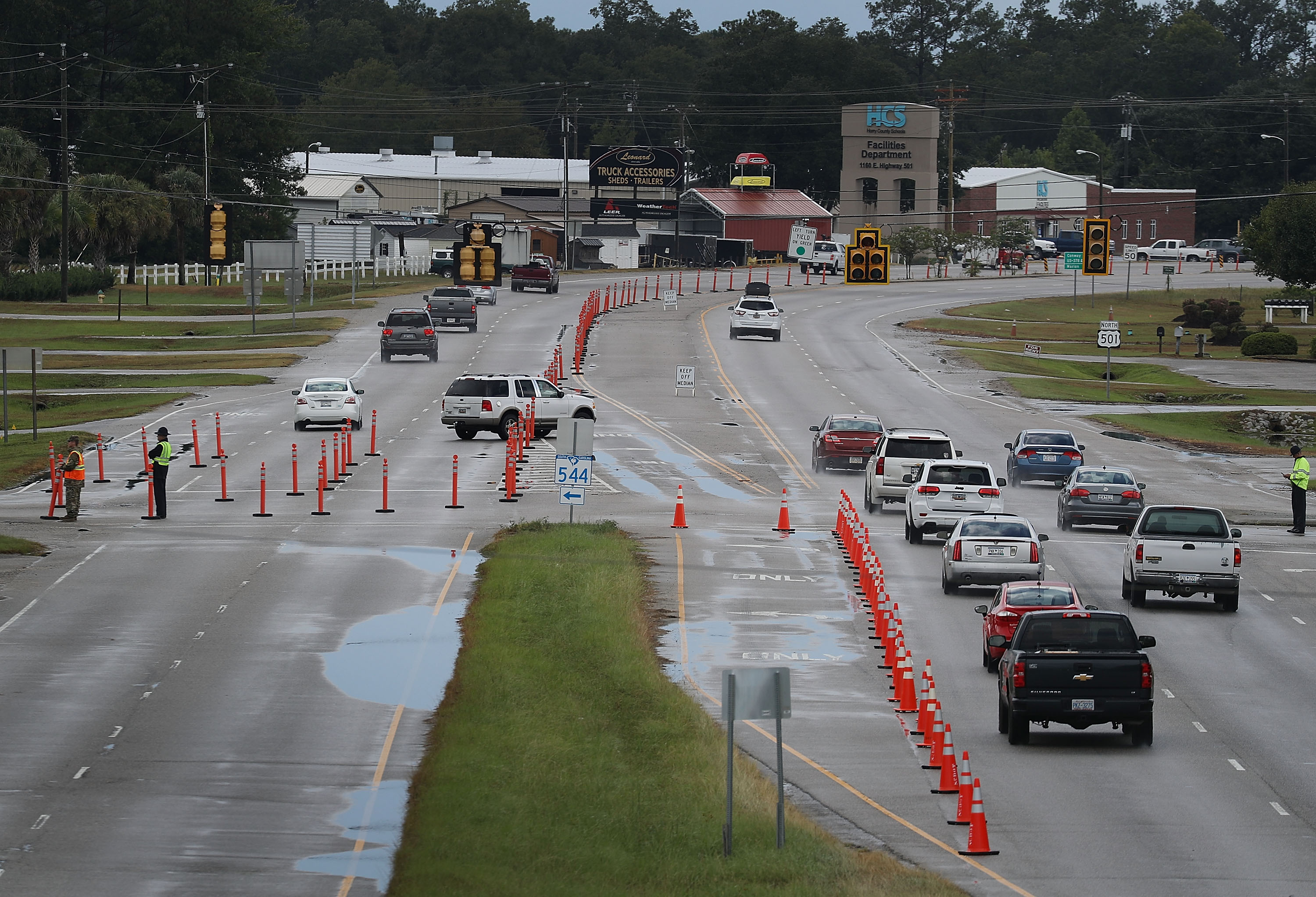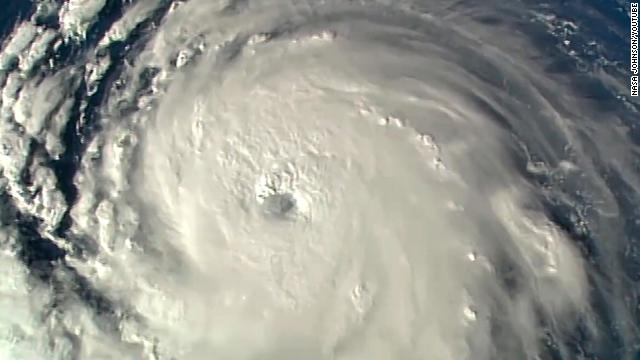
Getty In this satellite image provided by the National Aeronatics and Space Administration (NASA) and European Space Agency (ESA), Hurricane Florence churns through the Atlantic Ocean toward the U.S. East Coast on September 12, 2018.
Hurricane Florence is slated to make landfall Thursday night, and has the potential to do major damage.
On Tuesday morning, Jeff Byard, the Federal Emergency Management Agency associate administrator, told CNN, “This will be a storm that creates and causes massive damage to our country.” It is expected to be the strongest storm to hit the Carolinas in decades.
With winds reaching in the mid-100 mphs, water levels are expected to rise at rapid rates, with the possibility of a surge of 15 to 20 feet.
Read on to find out what you need to know about Hurricane Florence:
1. More Than 1 Million People Face Mandatory Evacuation Orders
More than 1 million people in the coastal areas of Virginia, North Carolina, and South Carolina were ordered to evacuate. The evacuation notice went into effect noon on Tuesday.
The NHC (National Hurricane Center) has warned the Carolinas and Virginia of a triple threat: 1. a “life-threatening” storm surge at the coast. 2. Freshwater flooding from rainfall, and 3. Damaging force winds.
North Carolina Gov. Roy Cooper is reported as saying during a news conference, “Hurricane Florence will affect each and every one of you… This storm is a monster, it’s big and it’s vicious.”
Virginia evacuation information can be found here, while South Carolina evacuation information can be found here.
2. Recovery Is Expected to Be ‘Long-Term’
CNN quotes Byard as saying that recovering from Hurricane Florence is expected to be long-term. “This is not going to be a storm that we recover from in days.”
He said the damages will likely come in the form of power outrages and infrastructure damage, with rainfall totals expected at 15 to 20 inches.
“This storm will and has the potential to cause loss of life, and we cannot emphasize the importance to take action now,” Byard said.
3. Winds Could Reach 150mph
At their peak, winds could reach up to 150 mph, according to The Hurricane Center. That brings it just 7mph from being classified as Category 5.
FEMA’s National Oceanic and Atmospheric Administration added that the first instance of rain could hit on Wednesday night. As of early Tuesday, the storm was moving west-northwest from Bermuda at 15mph.
Popular Mechanics reports that the entire mid-Atlantic region from South Carolina to DC are likely to be in Florence’s path.
4. Residual Effects Could Hit New York & New Jersey

Vehicle traffic travels along US 501 as the South Carolina government ordered that traffic use all the lanes on the route leading away from the coast to facilitate the evacuation of people ahead of the arrival of Hurricane Florence on September 11, 2018 in Myrtle Beach, South Carolina. Florence, already packing 130 mph winds, is expected to make landfall by late Thursday to near Category 5 strength along the Virginia, North Carolina and South Carolina coastline.
On Monday at 12pm, the NHC upgraded Florence to a category 4 hurricane.
According to NewsWeek, the residual effects of the storm have the chance of hitting New York and New Jersey, although Florence will not directly hit either state.
Mount Holly, New Jersey, was issued a coastal flood warning on Monday until 5pm ET. Residents in both states have been advised to brace for the storm.
Trent Davis, from the National Weather Service, tells NJ.com, “It never hurts to be prepared.”
The National Weather Service page has stated that the storm is slated to hit Raleigh-Durham, NC, Thursday night and Friday.
5. The Financial Toll of the Storm Is Expected to Reach $30 Billion

Vehicle traffic travels along US 501 as the South Carolina government ordered that traffic use all the lanes on the route leading away from the coast to facilitate the evacuation of people ahead of the arrival of Hurricane Florence on September 11, 2018 in Myrtle Beach, South Carolina. Florence, already packing 130 mph winds, is expected to make landfall by late Thursday to near Category 5 strength along the Virginia, North Carolina and South Carolina coastline.
According to AccuWeather Founder and President Dr. Joel N Myers, it is estimated that the cost to repair storm damage could be as large as $30 billion.
Marshall Moss, the AccuWeather Vice President of Forecasting and Graphics Operations, adds, “There’s never been a storm like Florence. It was located farther north in the Atlantic than any other storm to ever hit the Carolinas, so what we’re forecasting is unprecedented. Also, most storms coming into the Carolinas tend to move northward, and this storm looks like it’s going to stall over the region and potentially bring tremendous, life-threatening flooding.”
President Trump stated on Tuesday that while the government and FEMA are bracing for the storm, it “could strongly hit the East Coast,” reports NBC.


